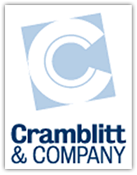The simple question that should drive all your marketing and communications
August 14th, 2017 | No Comments
 “Can we talk?”
“Can we talk?”
It was a signature phrase for the late comedian Joan Rivers; a way to establish intimacy with her audience.
A song with that title was an R&B hit for Tevin Campbell in the early 90s, communicating the desire to get closer to a woman he loves.
It’s even the title of this mindfulness article.
But it’s a question rarely asked by companies to their customers.
In corporate marketing and PR, we hear often about customer-centric communications. But, sadly, most of the time it’s literally lip service. More often, companies talk at or to their customers.
There are many reasons companies don’t talk with their customers. Perhaps the most self-empowering reason of all is pure corporate hubris: Marketers believe customers really don’t know what they want until it is presented to them. You could call that the Mad Men Justification.
So, companies just move ahead blindly, not really knowing what motivates their most important customers; developing products based on what coders or designers in a back room think is important.
Marketers believe customers really don’t know what they want until it is presented to them. You could call that the Mad Men Justification.
It’s easy to avoid the ignorance is bliss syndrome once you develop a handful of questions that push key buttons linked to customer wishes, desires and anxieties.
“What gives you the most satisfaction in your job”?
“What are the biggest obstacles to implementing new technology within your organization”?
“What are the problems that keep you awake at night”?
“What would best help you do your job more effectively or make it more pleasant”?
“Who are the people that influence purchasing and what must you do to justify purchases”?
You probably could think of others that are relevant to your industry or business, but you get the idea.
So how do you engage customers to answer these questions? That’s an easy one based on my experience, because people want to talk about themselves and their jobs. And a token gift of company swag never hurts. Here are some ways to engage:
- By making appointments (ask for 10 minutes tops) at trade shows or randomly engaging people on the show floor.
- By conducting focus groups at lunch or dinner at user-group meetings, trade shows or customer visits.
- By asking customers questions over the phone.
- By setting aside a few minutes during company visits.
Who should ask these questions and compile the answers in a report? It could be account executives, but in my experience they are sometimes too defensive. Better that it’s someone not directly connected to sales. It could be an internal marketing or PR person, or better yet a third-party who knows the industry, but is only connected to the company through this type of work.
After tabulating the answers and documenting trends, you have a qualitative overview of what a representative portion of your customers want or need from you. Not a profile, but a true representation from actual customers.
There might be surprises. There might not be surprises, which is a gift in itself. Whatever the results, it all starts with that three-word question: “Can we talk”?

